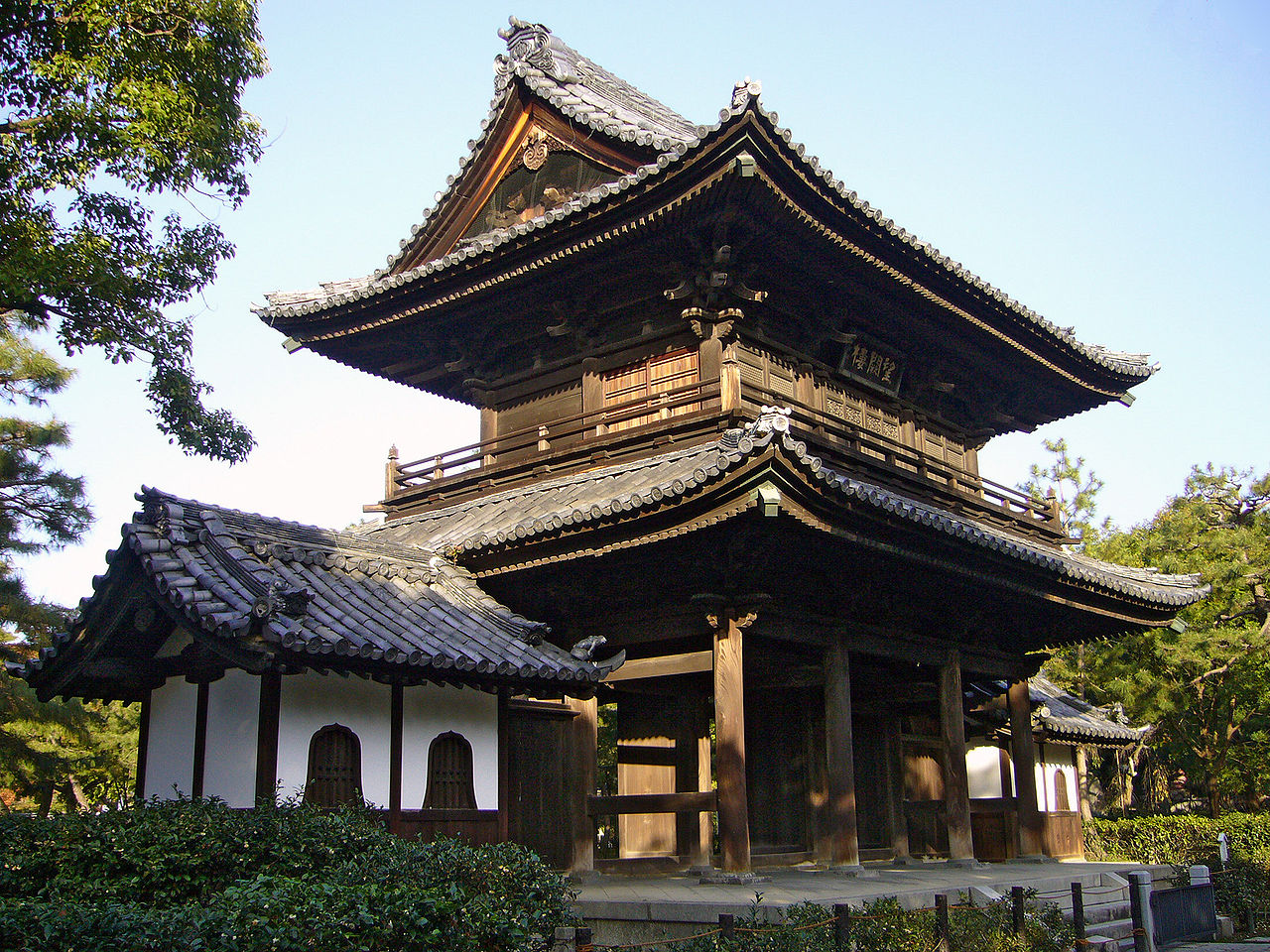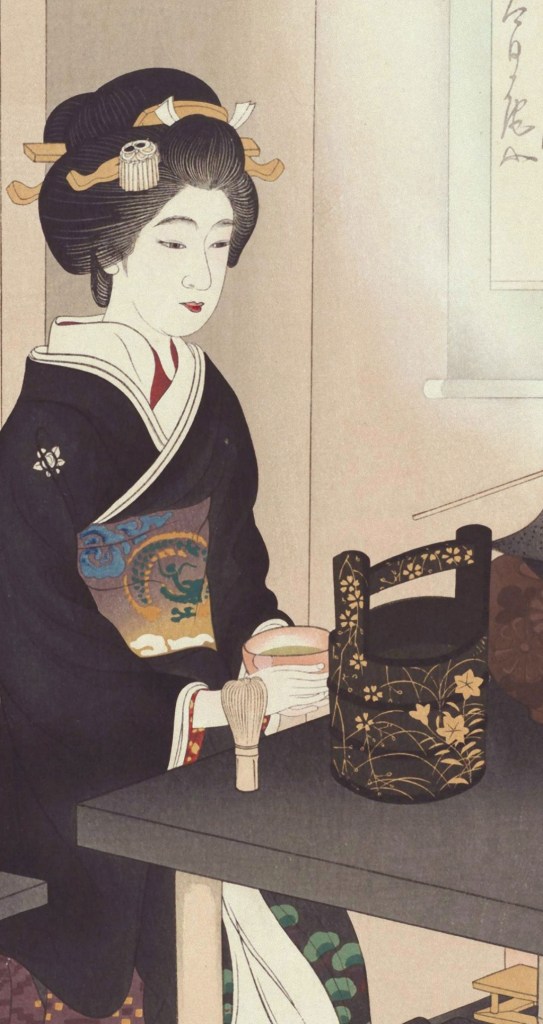Tea Origins
The origin of tea is said to be in China. From its origin it was considered a medicine and an antidote for poisons and toxins. A vestige of this can be seen today when referring to tea in Japanese. “O-cha o ip-puku” means one cup of tea where ‘puku 服’ is the counter word for medicine.
Shennong, said to have lived 4,500 years ago, is revered as the pioneer of herbal medicine and the person who laid the foundation for Chinese Medicine. Shennong traversed many mountains and explored many forests in search of medicinal herbs for humans. It is said that when Shennong trailed a poisonous herb, he used the tea plant as his antidote.
The Origin of Japanese Tea
The founder of the Rinzai sect of Zen Buddhism, Eisai Zenji (1141~1215), is also a hugely important figure in the history of tea in Japan. Eisai returned from his second study trip the China in the second year of the Kenkyuu Era – 1191 (Eisai‘s first study trip to China was in 1167, the second in 1187). In the second year of the Kennin Era (1202), Eisai was granted land in Kyoto from Shogun Minamoto Yoriie to build a temple. That temple would become Kennin-ji. Following this Eisai gave tea seeds to Myoei Shonin of Kousan-ji temple (Kyoto), who would start the cultivation of tea in Kyoto. Eisai also founded Jyufuku-ji temple in Kamakura and from there spread tea drinking to Eastern Japan.

Another of Eisai‘s achievements was to write the first treatise on tea in Japan, titled ‘Kissa Yojoki’, or ‘Treatise on Drinking Tea for Health’. Eisai wrote the treatise in 1211, at age 71. In the treatise Eisai explained the benefits of tea drinking as medicine, cultivation methods and how to make matcha. After writing the treatise he presented it to the Shogun Minamoto Sanetomo.
The Kissa Yojoki was the first medical book written in Japan and was the main stimulus for tea drinking to spread throughout Japan.
Kissa Yojoki
The Kissa Yojoki starts with the line: ‘Tea is an elixir for health and long life, and is a plant that grows in sacred soil.’ The treatise continues to explain the harvesting and processing methods for tea. The later parts of the book talks of the benefits of the mulberry plant. The Kissa Yojoki is still revered today as a seminal text on tea in Japan.

The Tea Jar Procession
Each year for the duration of the Edo Period, new harvest tea (shincha), was transported from Uji in Kyoto to the capital Edo (modern day Tokyo), in tea jars (chatsubo). This delivery of tea was conducted in a grand procession called the “o-cha tsubo do chu” (Tea Jar Procession). The Tea Jar Procession is said to have commenced during the reign of the 3rd Tokugawa Shogun, Tokugawa Iemitsu in 1633.
The procession consisted of a supervisor in chief, head tea master, two deputy tea masters, several attendants and a small army of samurai guards. Over time the number of tea jars increased and so too the number of guards. The whole procession eventually amounted to over 400 people making it the largest procession of all in the Edo Period. Being a procession of the shogunate, the Tea Jar Procession was second in authority behind the processions of the imperial family. This meant that any daimyo (feudal lord), procession from one of the domains would have to clear the road and wait for the Tea Jar Procession to pass through, should they meet along the highways.
As the Tea Jar Procession would pass the attendants in the procession would shout “Shita nii! shita nii!” (Heads down! Heads down!), to those along the road including townspeople as it passed through villages. Should anyone raise their head to view the business of the procession or show any disrespectful behavior they were punished without mercy. As the country was unified in the Edo Period and with the cessation of civil war, the samurai returned to farming. As the Tea Jar Procession occurred at the same time every year as harvest time, samurai families that ordered to help with the procession were said to have known no greater hardship than dealing with their crops and the demands of the shogunate to provide horses and men for the Tea Jar Procession.

The significance of the Tea Jar Procession can be seen in its appearance in the nursery rhyme:
“zuizui zukkoro bashi gomamiso zui, chatsubo ni owarete to wo pisshyan, nuketara dondokoshyo”
“the tea jar’s coming quick shut the door and hide, when it’s passed, phew, take a breath”.
The highways were repaired in preparation for the tea jar procession and farmers had to stop rice cultivation. Children were banned from playing outside, rock weights were removed from roofs (in case they dropped and disrupted the procession), all cooking fires were put out and funerals were banned when the tea jar passed through. Not only did life virtually stop when the tea jar passed, it would have also been a very fearful time for people.
The extravagance of the Tea Jar Procession began its decline with reform measures brought in by the 8th Tokugawa Shogun, Yoshimune. The number of tea jars from Uji to Tokyo was limited to three as one of the means for the bakufu to curb expenditure. Then with the demise of the Edo Bakufu in 1867, the Tea Jar Procession ceased after continuing unbroken for 235 years
Revered through ages

The combination of theanine (relaxant), and caffeine (stimulant), in tea gives you a calm, sustained concentration. Matcha is the most potent of all teas, which is why matcha was a central element in the spiritual practice of Zen monks and samurai warriors alike. Whether in spiritual or physical training, or everyday work, matcha gives you a calm, sustained concentration to perform well. Matcha represents centuries old wisdom still relevant for our lives today.

Etiquette is a natural part of the evolution of tea drinking from an everyday activity, to a path for spiritual enlightenment. Repeating the same act in the same way, over and over, quickly goes from a conscious effort to a passive, selfless act of meditation. This seemingly contradictory point that one achieves freedom through form, is the reason the mundane act of drinking tea is ritualized in chanoyu. But prior to any protocol, the most important thing when drinking matcha is to simply enjoy your tea in a moment of quietude. Almost 400 years ago, the founder of the Ueda School, Ueda Sōko wrote the following brief and easy to understand guide for achieving a moment’s quietude through matcha drinking:
“First take the chawan and raise it, showing your respect to the chawan by bowing. Then lower the chawan and look at the color of the tea. Bring the chawan to your mouth, but don’t drink the tea straight away. Take a moment to inhale the steam. Drink the tea in three mouthfuls. Wipe the part of the rim from which you drank with your fingers.”
Ueda Sōko – Founder of the Ueda School
The sensory aspects of inhaling the steam, peering into the deep green and feeling the heat of the tea transmit through the clay of the chawan are particularly important for achieving a tranquil mind. Here the introspective aspects of zen meditation are brought into the everyday, tactile world and tea drinking becomes a path linking the mundane and the transcendent.

The information listed on this page
has been edited and rearranged.
This information is based on the
work of Adam Sōmu Wojciński, from
the website uedasokochanoyu.com
and is used here with permission
and in accordance with the
Creative Commons Attribution –
NonCommercial-ShareAlike 4.0
International License.
